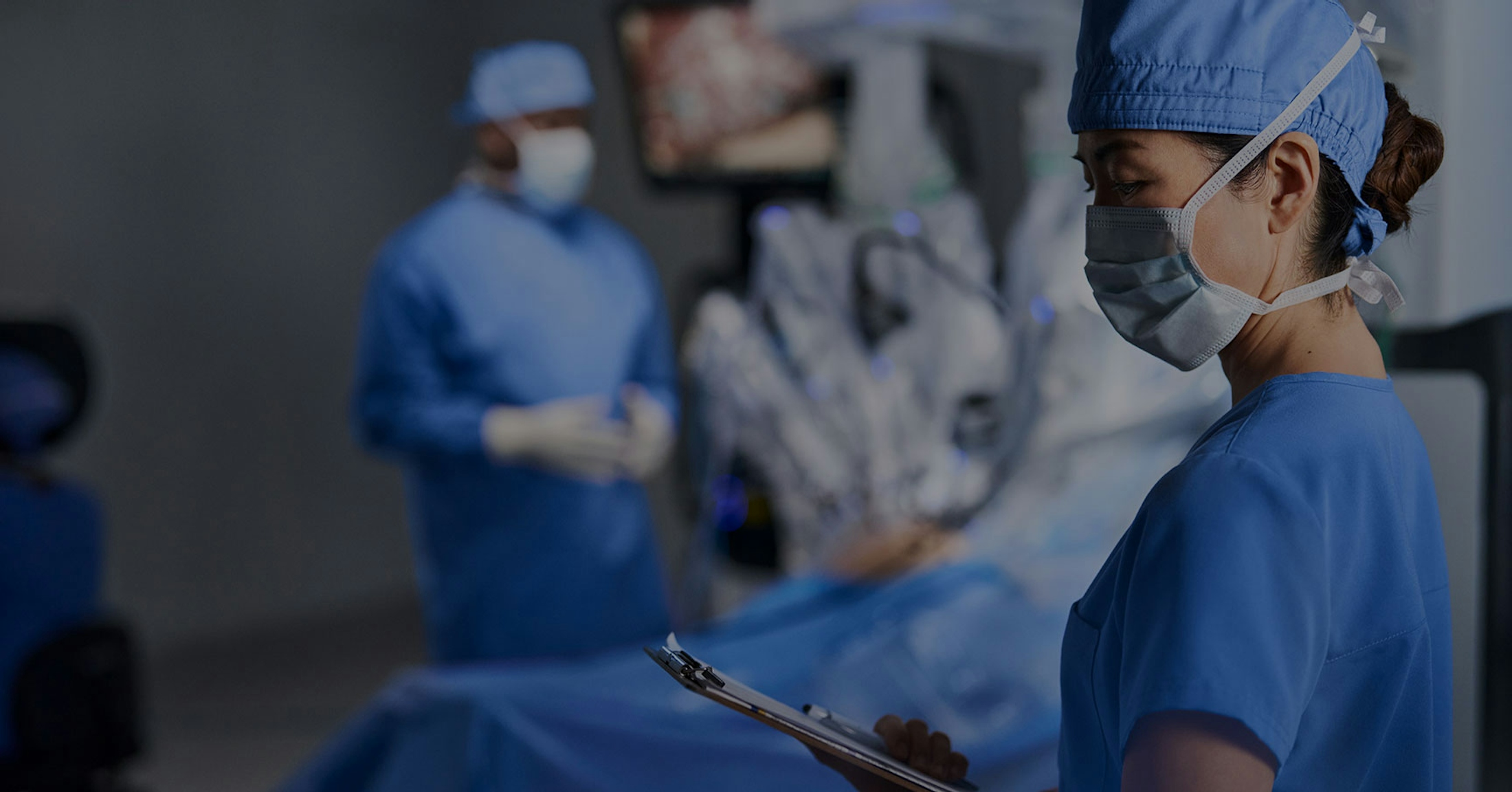

It’s fair to say that no one looks forward to surgery, but it may sometimes provide your best option for care. If you and your doctor feel that surgery is right for you, you can explore the different ways doctors can perform the surgery you need.
Traditional open surgery, where a surgeon operates with handheld instruments through a large cut (incision), may be the first method that comes to mind. However, you could also be a candidate for a less invasive approach requiring just a few small cuts, called minimally invasive surgery. Minimally invasive surgery includes laparoscopic surgery and robotic-assisted surgery.
Intuitive, a pioneer in robotic-assisted surgery and maker of da Vinci surgical systems, was founded in 1995. Today, the company continues to create and refine robotic systems, giving surgeons the added benefits of technology that helps extend their capabilities.
These pages are intended to provide patients with information about robotic-assisted surgery with da Vinci systems. It’s important to remember that Intuitive does not provide medical advice. After discussing all options with your doctor, only you and your doctor can determine whether surgery with a da Vinci system is appropriate for your situation. You should always ask your surgeon about their training, experience, and patient outcomes.
Doctors use many technologies that enhance their capabilities beyond what the human body allows. MRI and CT scanners, for example, enable doctors to “see” inside the body. Similarly, many surgeons perform robotic-assisted surgery using a da Vinci system because it extends the capabilities of their eyes and hands.
Da Vinci surgical systems are cleared by applicable regulatory agencies for use in several types of surgery. Learn about the different procedures that can be performed with a da Vinci system and see information about conditions and surgical options that you may discuss with your doctor.
Important safety information
Patients should talk to their doctor to decide if surgery with a da Vinci system is right for them. Patients and doctors should review all available information on nonsurgical and surgical options and associated risks in order to make an informed decision.
Serious complications may occur in any surgery, including surgery with a da Vinci system, up to and including death. Serious risks include, but are not limited to, injury to tissues and organs and conversion to other surgical techniques which could result in a longer operative time and/or increased complications.
For important safety information, including surgical risks and considerations, please also refer to www.intuitive.com/safety. For a product’s intended use and/or indications for use, risks, full cautions, and warnings, please refer to the associated user manual(s).
Individuals’ outcomes may depend on a number of factors—including but not limited to—patient characteristics, disease characteristics, and/or surgeon experience.
Da Vinci Xi system precaution statement
The demonstration of safety and effectiveness for the representative specific procedures did not include evaluation of outcomes related to the treatment of cancer (overall survival, disease-free survival, local recurrence), except for radical prostatectomy which was evaluated for overall survival, or treatment of the patient’s underlying disease/condition. Device usage in all surgical procedures should be guided by the clinical judgment of an adequately trained surgeon.
Disclaimer
Patients should consult their physician to decide whether robotic-assisted surgery is appropriate in the individual case in order to make an informed decision taking into account benefits and risks.
Surgeons who perform surgery using the da Vinci system can be found using the Physician Locator. Intuitive Surgical provides surgeons with training on the use of the da Vinci system but does not certify, credential, or qualify the surgeons listed in the Physician Locator.